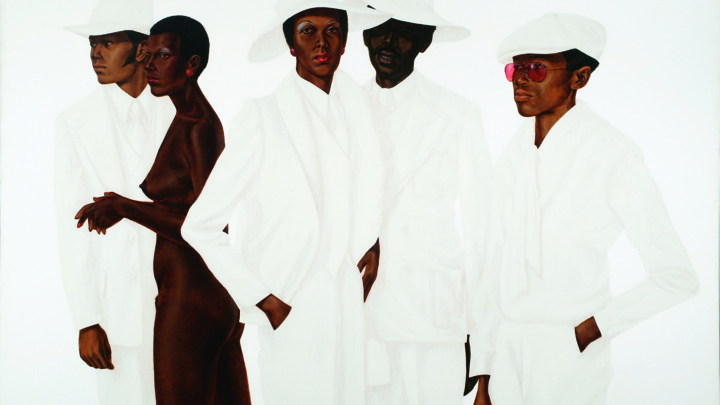One portrait that I have always loved is The Desperate Man by Gustave Courbet. It is such a simple portrait in the way that there is nothing in the background. The man from the chest up fills the canvas with his arms bent, hands clutching fistfuls of his hair. He wears a loose white shirt under what seems to be a black apron fastened around his neck. But it is the white in his crazed eyes that really draws my attention. There is a level of incredible tension and anxiety about this piece that I find so interesting and also mysterious; this is not a pose that you would expect to find someone observing themselves doing. You can feel the tension in the taut muscles of the man’s forearms and neck. The dramatic lighting in the piece adds to the mystery and also the theatric quality of his crazed expression. I love the simplicity of the composition mixed with the heavy emotion and charged atmosphere.
The piece that I was most attracted to at the MET seems to follow the same theme. John Singer Sargent’s Madame X has always been one of my favorite pieces and every time I see it I can’t help but stop and stare. Like the Courbet, Sargent’s piece has very little in the way of a background. Most of one’s attention goes to the subject of the full-body portrait: Madame X (Virginie Gautreau). She stands in a full-length, elegant black gown; one hand holds her skirt and the other is splayed quite rigidly on a small, low table, the only other object in the room. Her head turns gracefully to the side, displaying for us only her profile. There is a charge in the air here, similar to Courbet’s portrait, but with a more austere, superior feel than The Desperate Man‘s frenzy.
The deep level of emotion, intimacy, and individuality in each of these portraits seems to be the key to my obsession. When I make my own art, either through film photography, drawing, painting, or printmaking, I have always been drawn to people and how their emotion and personality can be captured in a piece of art. That is exactly what these portraits have accomplished and my awe of them can also been seen as my incredible jealousy at the artists’ ability to convey those subtle, psychologically oriented components of the paintings.













 (catlett)
(catlett)




